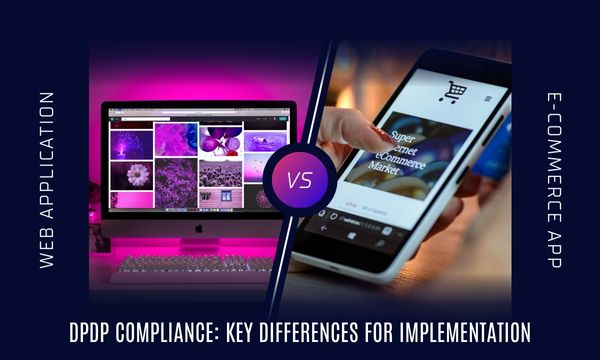
Imagine arriving at your office one morning only to find your systems locked, your data held hostage, and a ransom note demanding an exorbitant fee for its release. Unfortunately, this is not just a plot from a thriller but a reality many businesses in India face today. Cyber threats have become a stark reality as we embrace the digital age, and safeguarding our businesses has never been more critical.
In recent years, India has rapidly transformed into a digital powerhouse, with businesses increasingly relying on technology to drive growth, innovation, and efficiency. However, this digital transformation has also attracted a surge of cybercriminals. According to a Data Security Council of India (DSCI) report, India saw a 37% increase in cyberattacks in 2022 alone. The stakes are high, with a single cyber incident having the potential to disrupt operations, tarnish reputations, and cause significant financial loss.
The threat landscape is evolving faster than ever, with attackers leveraging sophisticated tactics and exploiting every vulnerability. From phishing schemes targeting unsuspecting employees to ransomware attacks crippling entire operations, the need for robust cybersecurity measures cannot be overstated. It's time for Indian businesses to understand the gravity of these threats and take decisive action to protect their digital assets.
The Digital Battlefield: Current Cyber Threats
1. Phishing, Ransomware, and Social Engineering: The Unseen Predators
Indian businesses are increasingly targeted by cybercriminals using sophisticated techniques like phishing, ransomware, and social engineering. Phishing attacks trick employees into revealing sensitive information, while ransomware holds data hostage, causing crippling downtime. Social engineering exploits human behaviour to gain unauthorized access, making every employee a potential vulnerability.
Recent reports by PwC indicate a 30% year-on-year increase in ransomware attacks in India, emphasizing the need for proactive measures. The human element in cybersecurity cannot be overstated, as 82% of breaches involve some form of human error or manipulation.
2. Cloud-Related Threats: The Double-Edged Sword
The transition to cloud services has brought unprecedented flexibility and scalability to businesses. However, it also opens new avenues for cyber threats. Misconfigurations, data breaches, and identity and access management (IAM) issues are common concerns. In a recent survey by Cybersecurity Ventures, 52% of respondents identified cloud-related threats as their top worry.
A study by McAfee highlights that over 25% of businesses have experienced data theft from the cloud, while Gartner predicts that through 2025, 99% of cloud security failures will be the customer’s fault. These statistics underscore the importance of robust cloud security practices.
3. IoT Vulnerabilities: The Invisible Entry Points
The rise of IoT devices has introduced new challenges. These connected devices, from smart printers to industrial sensors, often lack robust security measures, making them prime targets for cyberattacks. 45% of organizations have highlighted attacks on connected devices as a significant risk.
The 2023 IoT Security Report by Symantec reveals that IoT devices face an average of 5,200 attacks per month. This staggering number calls for immediate action in securing these devices, implementing stringent security measures, regular firmware updates, and network segmentation to reduce risks.
4. Hack-and-Leak Operations: Public Exposure of Private Data
Hack-and-leak operations, where sensitive data is stolen and released publicly, are becoming more frequent. Such attacks not only compromise business operations but also cause severe reputational damage. 36% of organizations are particularly worried about this threat.
For instance, the 2024 breach at a major Indian telecom company resulted in the leak of millions of customer records, illustrating the devastating impact of such operations. Ensuring strong encryption and comprehensive incident response plans are critical defences.
5. Software Supply-Chain Compromise: The Trojan Horse
Supply-chain attacks, targeting software vendors to infiltrate client systems, are on the rise. These attacks can have far-reaching consequences, compromising the security of even the most diligent organizations. 35% of businesses are concerned about these sophisticated intrusions.
According to a recent study by the Ponemon Institute, 59% of companies experienced a data breach caused by a third party. This highlights the need for rigorous vetting and monitoring of suppliers and partners to safeguard against such vulnerabilities.
Combatting Cyber Dangers: Strategies for Indian Businesses
1. Building a Human Firewall
The human element is often the weakest link in cybersecurity. Comprehensive employee training and awareness programs are essential. Regular drills and phishing simulations can prepare employees to recognize and respond to threats effectively.
PwC's Global Economic Crime and Fraud Survey 2022 notes that companies with robust training programs are 45% less likely to fall victim to cyberattacks. This underscores the critical role of ongoing education in building a resilient cybersecurity posture.
2. Strengthening Cloud Security
Adopting robust cloud security practices is paramount. This includes ensuring proper configurations, implementing strong IAM protocols, and conducting regular security audits. Businesses should partner with reputable cloud service providers who offer comprehensive security features.
A report by the Cloud Security Alliance recommends multi-factor authentication (MFA), end-to-end encryption, and regular security audits as best practices for securing cloud environments. These measures can significantly reduce the risk of cloud-related breaches.
3. Securing IoT Devices
Every IoT device should be viewed as a potential entry point for cyberattacks. Implementing stringent security measures, regular firmware updates, and network segmentation can significantly reduce risks. Employing a zero-trust model ensures that all devices are continuously monitored and verified.
According to Gartner, by 2025, over 75% of IoT device manufacturers will implement basic security measures, but businesses must not rely solely on manufacturers. Proactive steps are necessary to protect their networks and data.
4. Preparing for Hack-and-Leak Operations
Organizations must have a robust incident response plan to deal with data breaches and leaks. Encrypting sensitive data and ensuring regular backups can mitigate the damage. Communication strategies should be in place to manage public relations in the event of a data leak.
The Verizon Data Breach Investigations Report (DBIR) suggests that having a well-documented incident response plan can reduce the cost of a breach by an average of 30%. This statistic alone makes the case for preparedness and comprehensive planning.
5. Protecting the Supply Chain
To guard against supply-chain attacks, businesses should conduct thorough security assessments of their vendors. Implementing stringent access controls and regularly monitoring third-party interactions can help detect and prevent potential threats.
NIST's Cyber Supply Chain Risk Management Practices for Systems and Organizations guide emphasizes the need for continuous monitoring and risk assessment. Leveraging these practices can create a more secure supply chain ecosystem.
6. Investing in Cybersecurity
Cybersecurity budgets must reflect the growing threat landscape. Investments should focus on advanced threat detection systems, comprehensive security frameworks, and continuous monitoring. Businesses should also explore cyber insurance as a financial safeguard against potential losses.
IDC's Worldwide Semiannual Security Spending Guide forecasts that global cybersecurity spending will reach $174.7 billion in 2024. This trend indicates that Indian businesses must also prioritize substantial investment in cybersecurity to stay protected.
7. Ensuring Regulatory Compliance
Staying compliant with cybersecurity regulations and standards is crucial. Organizations should establish dedicated roles like Business Unit Information Security Officers (BISO) to oversee security measures. Adopting DevSecOps practices ensures security is integrated into every stage of the software development lifecycle.
India's Personal Data Protection Bill and the upcoming Digital Personal Data Protection Act highlight the importance of regulatory compliance. Adhering to these regulations not only ensures legal compliance but also builds customer trust.
Conclusion:
The digital landscape offers immense opportunities but also exposes businesses to unprecedented risks. Indian business owners must recognize the urgency of robust cybersecurity measures. By investing in technology, fostering a culture of security, and staying vigilant, businesses can navigate the cyber threat landscape and secure their future.
In the words of cybersecurity expert Bruce Schneier, "Security is a process, not a product." It’s time for Indian businesses to embrace this philosophy and turn cybersecurity into a continuous, evolving practice.
Let's ensure that the next time you walk into your office, your systems are secure, your data is safe, and your business is thriving in the digital age.



